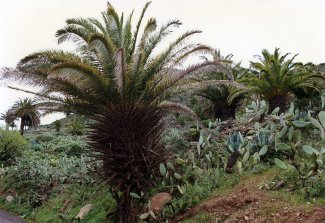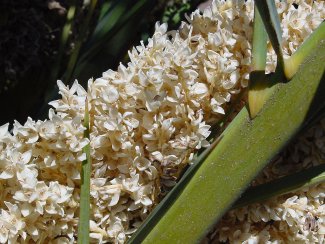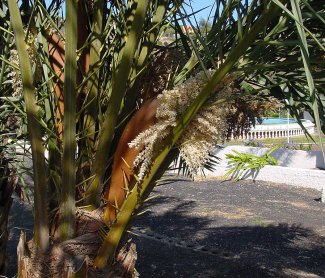Macaronesia: Spain - Canary Islands
Growing to 25 m tall, Canary Island date palms tend to grow in clusters that form a dense canopy that excludes light from reaching beneath them, leading to a loss of native plants. Large palm with single, thick, non-branching trunk (1.2 m diameter) with a diamond-shaped pattern from old leaf scars and large crown of foliage at the top of the trunk. Long, stiff leaves (to 1.8 m) are made up of many leaflets that are dark green, lance-shaped and pointed (30 - 45 cm long), and the leaf stalk is covered with sharp, shiny green spines (5-8 cm) with a feathery appearance. Branched clusters of creamy yellow-white flowers open from a husk-like structure that appears in October to November on a long stem amongst the leaves, and are followed by fleshy, date-like fruit (1-5 cm long), ripening from orange-yellow to dark purple in summer.
Phoenix canariensis (Canary Island date palm) is a tree that has escaped cultivation in southern California to invade stream corridors as well as orchards and, occasionally, landscaped areas. P. canariensis was introduced to mainland Europe from the 1600s, and around the Mediterranean including North Africa and West Asia, and was introduced across the Atlantic Ocean from as early as the 1700s as an ornamental palm, first by Spanish missionaries and colonizers, such as to California, Central and South America. It has since then been widely introduced as a popular ornamental palm, to parts of Australasia, Asia and Africa.


